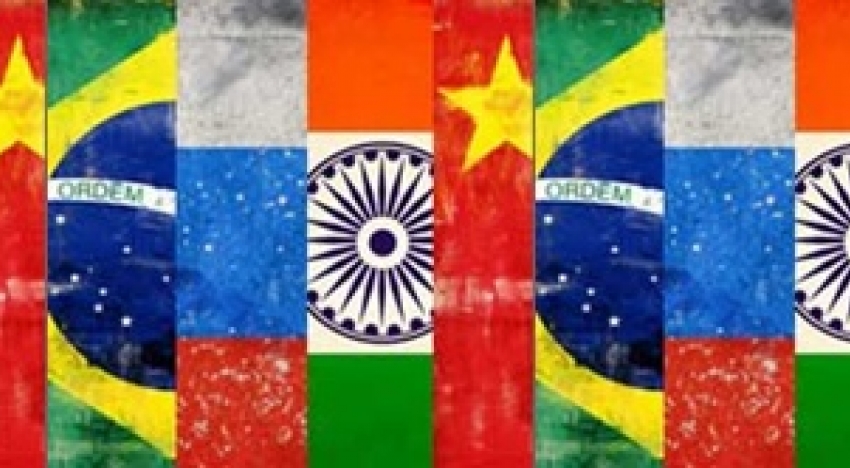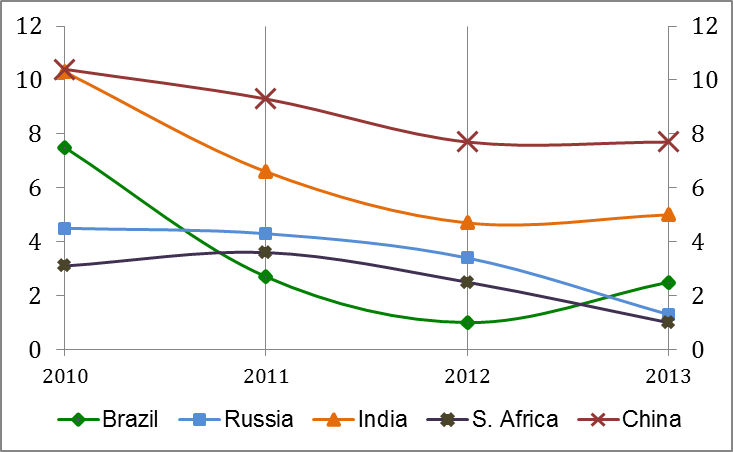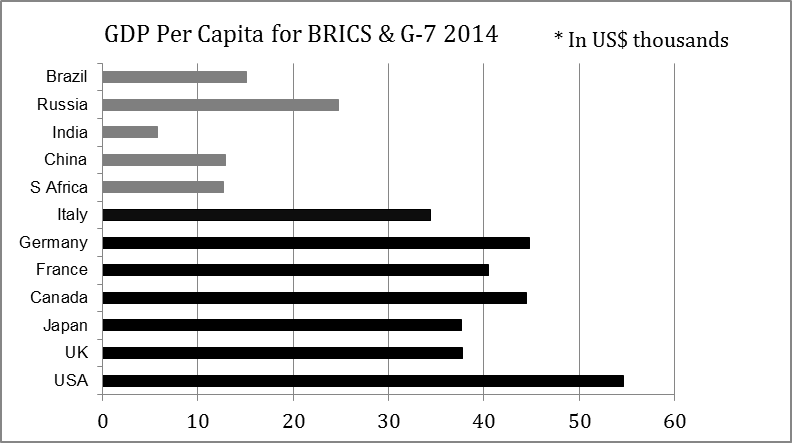A 2014 Health Report on BRICS

Please note that we are not authorised to provide any investment advice. The content on this page is for information purposes only.
In 2001, the term BRIC was coined by Jim O’Neill, formerly with Goldman Sachs, who had used the acronym in his thesis on emerging markets of Brazil, Russia, India and China. With inclusion of South Africa in 2010, BRICS was formed. It started to reflect the strength of the emerging markets across the globe. Together BRICS comprises of 40% of the world’s population, 21% of the world’s GDP and 30% of the global territory. To many, BRICS had only been holding only meetings, never reaching on any big development or funding plans.
In 2001, the term BRIC was coined by Jim O’Neill, formerly with Goldman Sachs, who had used the acronym in his thesis on emerging markets of Brazil, Russia, India and China. With inclusion of South Africa in 2010, BRICS was formed. It started to reflect the strength of the emerging markets across the globe. Together BRICS comprises of 40% of the world’s population, 21% of the world’s GDP and 30% of the global territory. To many, BRICS had only been holding only meetings, never reaching on any big development or funding plans. It was just seen as a group of emerging economies that wanted to de-dollarize their markets owing to the strong dominance of dollar market. The dollar has been fluctuating and since it’s the international currency, any fluctuation in it, directly affects their trade. The dollar dominated global economic transactions have shrunk from 90% to 60% in 10 years. But Europe and US still make up 50% of the world’s GDP and also happen to print two of the world’s leading currencies. BRICS is often compared to G8, which is an association of advanced economies comprising of USA, UK, Canada, Japan, Italy, France, Russia & Germany. Russia was then excluded from G8 in March 2014, owing to its rising conflicts with Ukraine and EU was included.
With the entrance of South Africa in 2010, the following year 2011 showed a fall in BRIC but not in South Africa. The factors contributing to this could have been the global shocks of Subprime Mortgage Crisis. But the association of BRICS did not contribute much or did not shelter these economies from the crises. But even though China has fallen from a 10% to 7.7%, it’s still adding more than twice as much to global output as the U.S. Today, China’s economy is as big as the U.S. economy.
Source: IMF
BRICS plans to include other south nations in the future. The 6th BRICS Summit in Brazil decided on the ‘New Development Bank’ in 2015, which will have its headquarters in Shanghai, China. The proposed bank with a $100 billion capital structure is expected to be an alternative to other multilateral agencies and will be focused on development agenda in the BRICS countries. The bank will provide new financial channels and funding support for infrastructure projects within the member countries. With New Development Bank, BRICS aims to challenge international firms like the World Bank and IMF so as to rely less on the fluctuating dollar and more on each other for financial support. It will also create a reserve currency pool worth over another $100 billion. Out of the total initial capital of $100 billion, China will be the biggest contributor with $41 billion, Brazil, Russia and India would give $18 billion each, and South Africa would contribute $5 billion.
Economists have criticized the fact that since BRICS formation there have never been any great developments. Some critics are of the opinion that BRICS basically have nothing in common especially when it comes to language, culture or history & geographically, they are miles apart from Brazil and South Africa. With a narrow escape from recession, Brazil faces a struggle and is trying hard to keep up to its past growth rates. Plummeting crude oil prices, international sanctions, the crumbling ruble and rising sovereign debt yields are posing big threats for the Russian economy. According to Central Bank, around $85 billion has been pulled out of the Russian economy in 2014 simply because investors lost their confidence. Russia seems to be more of a worry for BRICS at the moment since it has fallen low in exports that have even affected stronger economies like Germany. With its foreign debt being 35% of its GDP, Russia is struggling hard to keep up with rest of the countries in BRICS. Amidst all this, India faces corruption, poor infrastructure, lack of education and mass poverty but yet remains in better economic shape. China has an extraordinary growth rate due to its investments that are 48% of its GDP. Being the largest economy, it could pose a risk to the global economy incase these projects prove unprofitable. South Africa’s inclusion has never been much of a talk in BRICS since its economy is too small when compared to others. As of now, it can only benefit than contribute from BRICS.
Source: IMF World Economic Outlook Database October 2014
*Based on Purchasing Power Parity
Recent data by IMF reflect a slowdown in the developing economies. The graph gives an indication of how the BRICS still have further to go. It shows GDP (economic output) per person, which gives an indication of the level of economic development.
But writing off BRICS is a bit too early. Jim O’Neill says that many of the star performers in 2014 were the emerging-market economies and it will remain the same for 2015. And that seems a bit true since every economy across the globe was not really shining either in 2014. Certain advanced economies like that of Japan and Eurozone are still going through financial turbulence. Japan is facing constant criticisms for decades now. With failure of new reforms called Abenomics, Japan has failed to regain both its lost growth and lost confidence of its investors. Euro zone, a new addition to G8 is no far behind. With rising doubts in Germany, considered a stimulator in the zone, investors are in two minds and some want to have their own currency and not rely on Euro. Spain itself has reached a breaking point and could even lead up to a partial break up from Euro. France faces structural reforms and with no public support along with little support from the ECB, it could continue to struggle economically. Greece has been leading the way in Eurozone failures and repetitive fallouts have resulted in low growth and high unemployment. Italy is no far behind since it has shown signs of a poor economy.
China’s Vice-Finance Minister Zhu Guangyao said “BRICS countries represent a new and rising power, and they are playing an increasingly important role in the international economy”. China is bigger than Germany, France and Italy combined and will be a $10 trillion economy by the end of 2014; that during the course of this year’s slowdown, it added roughly $1 trillion to world output; and that slowing growth in China is still quite rapid by most countries’ standards. India seems to be promising with its new elected Prime Minister Narendra Modi and there seems to be a lot of optimism especially on the investment front. BRICS making a big impact in the near future is definitely not something that will happen but in the coming years, it could hold some significance. In 2015, there will be too much burden on the shoulders of each economy across the world since 2014 has not been very promising for many nations across the world.
If only countries realized that since they are so globally connect, any crisis in one country can easily spread across others. A living case is the financial crisis in 2008 that actually originated in USA but affected many nations, many of which still continue to struggle economically.
BRICS – Where does it stand in 2014? is republished with permission from The Financial Keyhole






